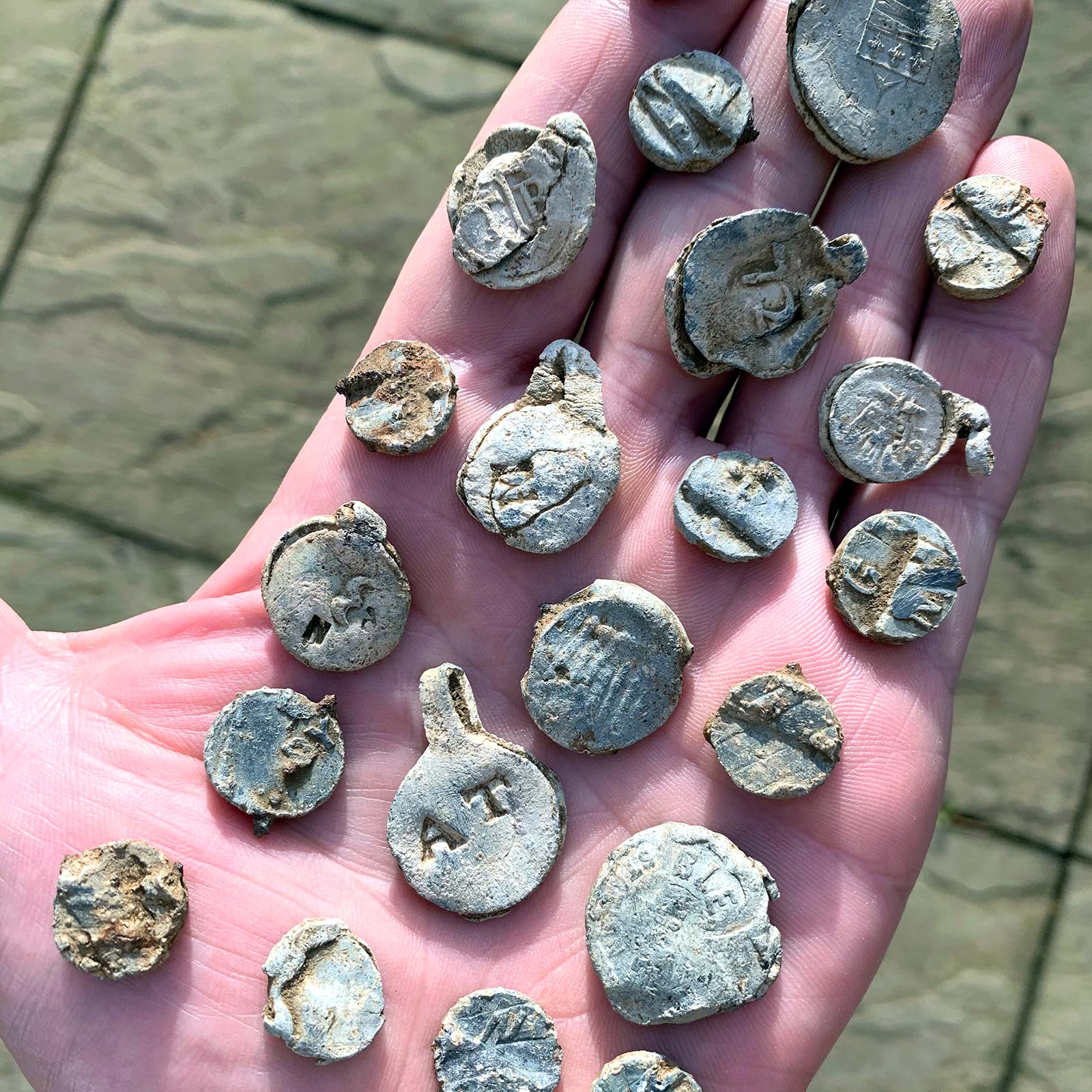
history is in the lead
Since I started my new journey back into this amazing hobby I have been finding all sorts of things of the metal persuasion. A lot of the time I find quite a bit of rubbish, nails, tin cans, ring pulls, the list goes on but that makes it all the more special when I do find something good. Sometimes though it is hard to decipher what is rubbish and what isn’t until you have taken it home, cleaned it up and had a good look.
In the fields I’m lucky enough to detect on I started to find quite a lot of lead, just small molten lumps of lead. I mostly discard these items as rubbish but it did make me wonder why I was finding so much of it. Pretty soon it started to become clear.
Every now and then I was finding little lead discs, the ones I have found so far are varying sizes and at first I didn’t think anything of them, I almost disregarded them as rubbish too, it’s a good thing I didn’t. On the most part the ones I have been finding are quite small and nondescript but then I found one which was a little bit bigger and as it turns out in terms of history, a little more special.
I put it in my finds bag and didn’t think anything of it, that was until I got home and cleaned it up. As lead is a soft metal you do have to be quite careful with how you clean it, I usually just use some distilled water and gently rub off the dirt with my fingers. In doing this it soon became clear that this piece of lead had markings on it, it was a cloth seal.
Quite excited by this I posted the find on my metal detecting social media group and a lot of members soon confirmed it was indeed a lead cloth seal. It turns out that lead seals were used throughout the centuries as a means of identification, regulation and quality control for various tradable items such as textiles etc.
One of the members pointed me to a specific social media group dedicated to identifying lead bag seals which is where I was lucky enough to find out the history behind this particular seal.
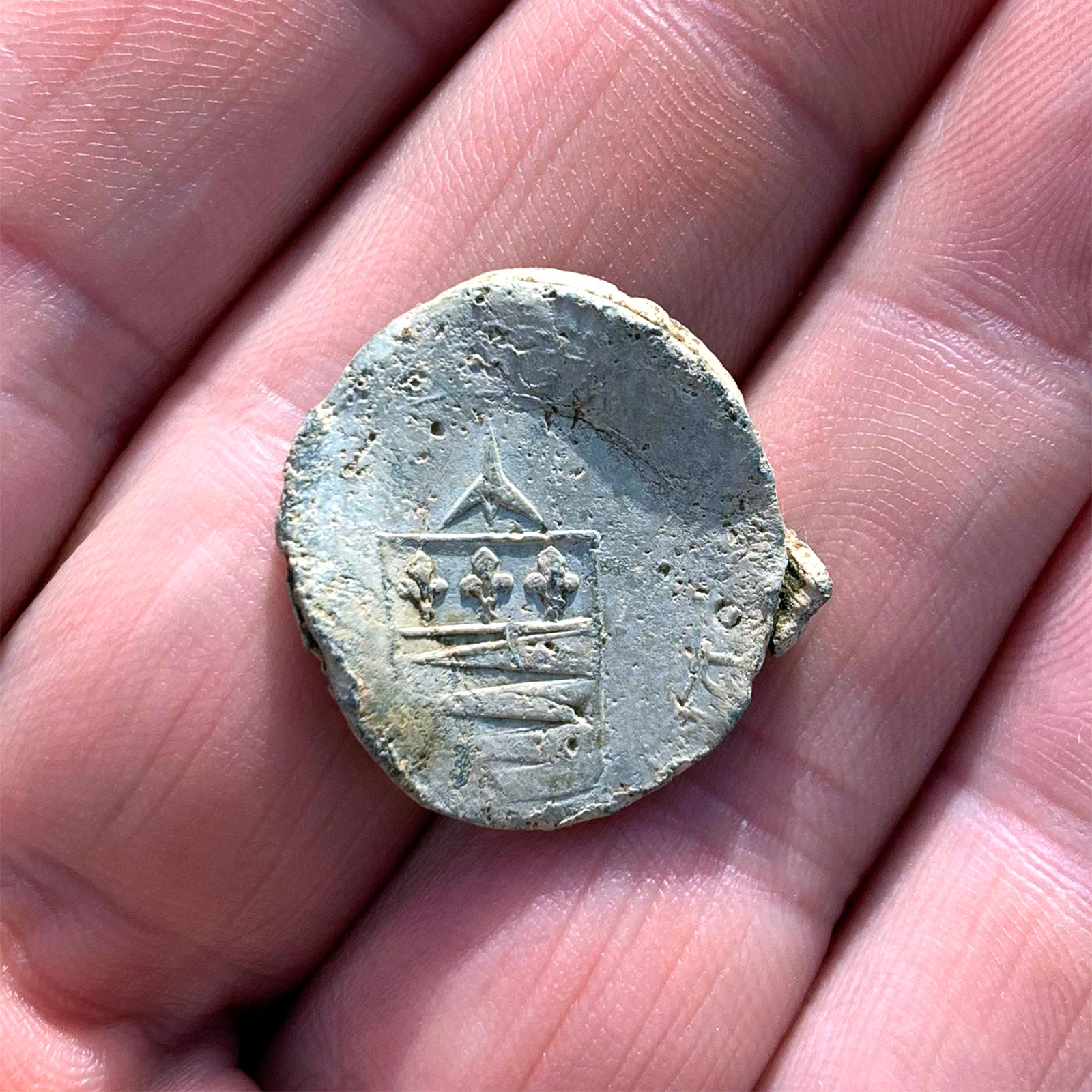
The coat of arms of the French town Castres.
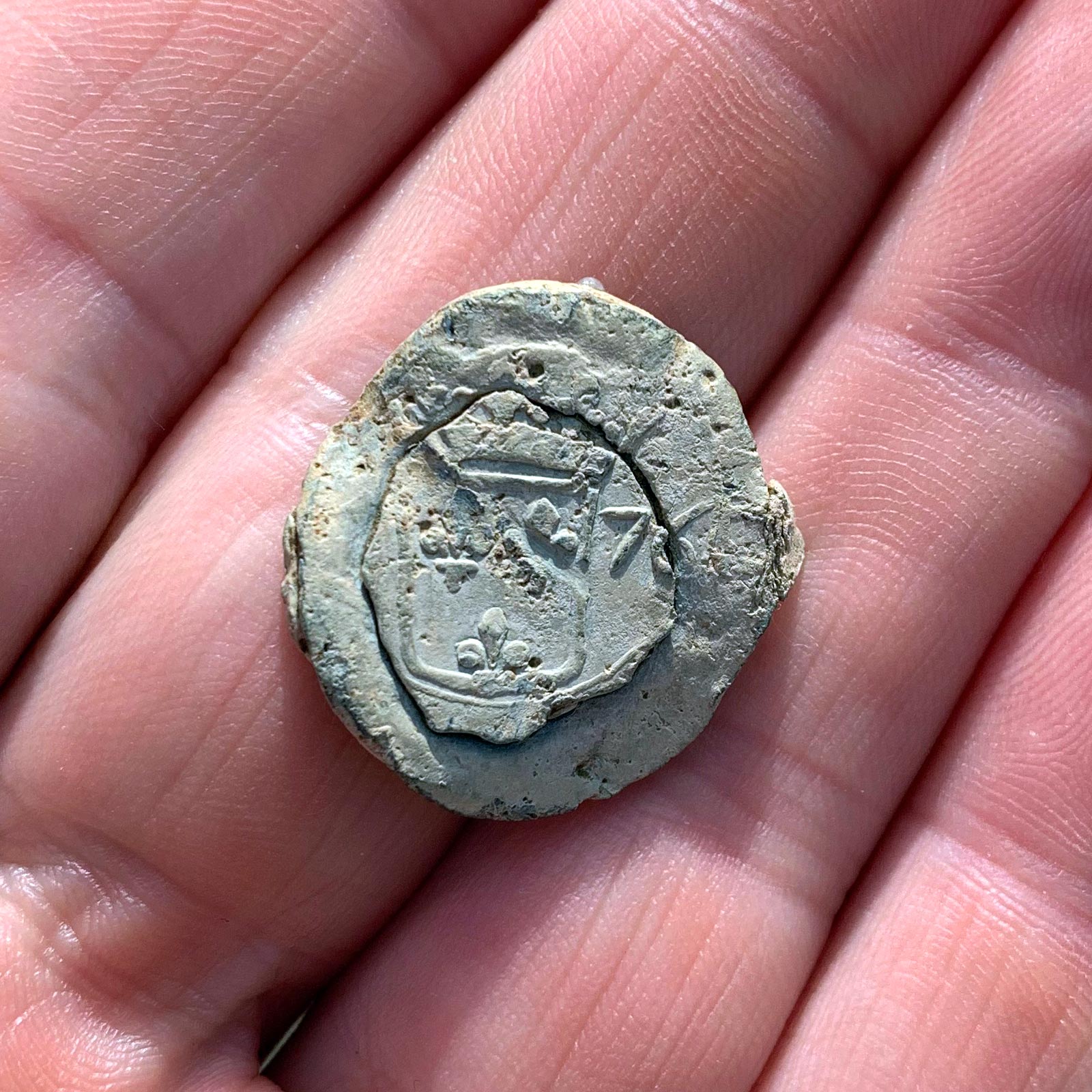
The Fleur de Lys, right sided with the number 76.
The coat of arms that can be seen on this cloth seal is of the French town Castres which is located in the Occitanie region of France. The town was known to have traded in various goods including textiles. On the reverse you can see the Fleur de Lys and on the right of that is the number 76, this gives a precise date for this seal which is 1676!
So a little pice of lead that I almost threw away is actually an insightful piece of history of the land I’m detecting on, and on the trades and businesses that have gone on here over the years. This and a few more of the lead seals I have found have been documented on the bagseals.org website, the curator of which was very helpful in identifying and providing this historical insight.
But these aren’t the only lead items that I have been finding. I’ve also found what could be a farmers token and musket balls (shown below), both of which I’ve not been able to find much information on as yet. I will persevere on researching the farmers token and if I do find anything out about it I will be sure to share it in a future post!
As I have said before and it’s something I firmly believe, the treasure isn’t always in the value of things but in the connection with the history of our ancestors!
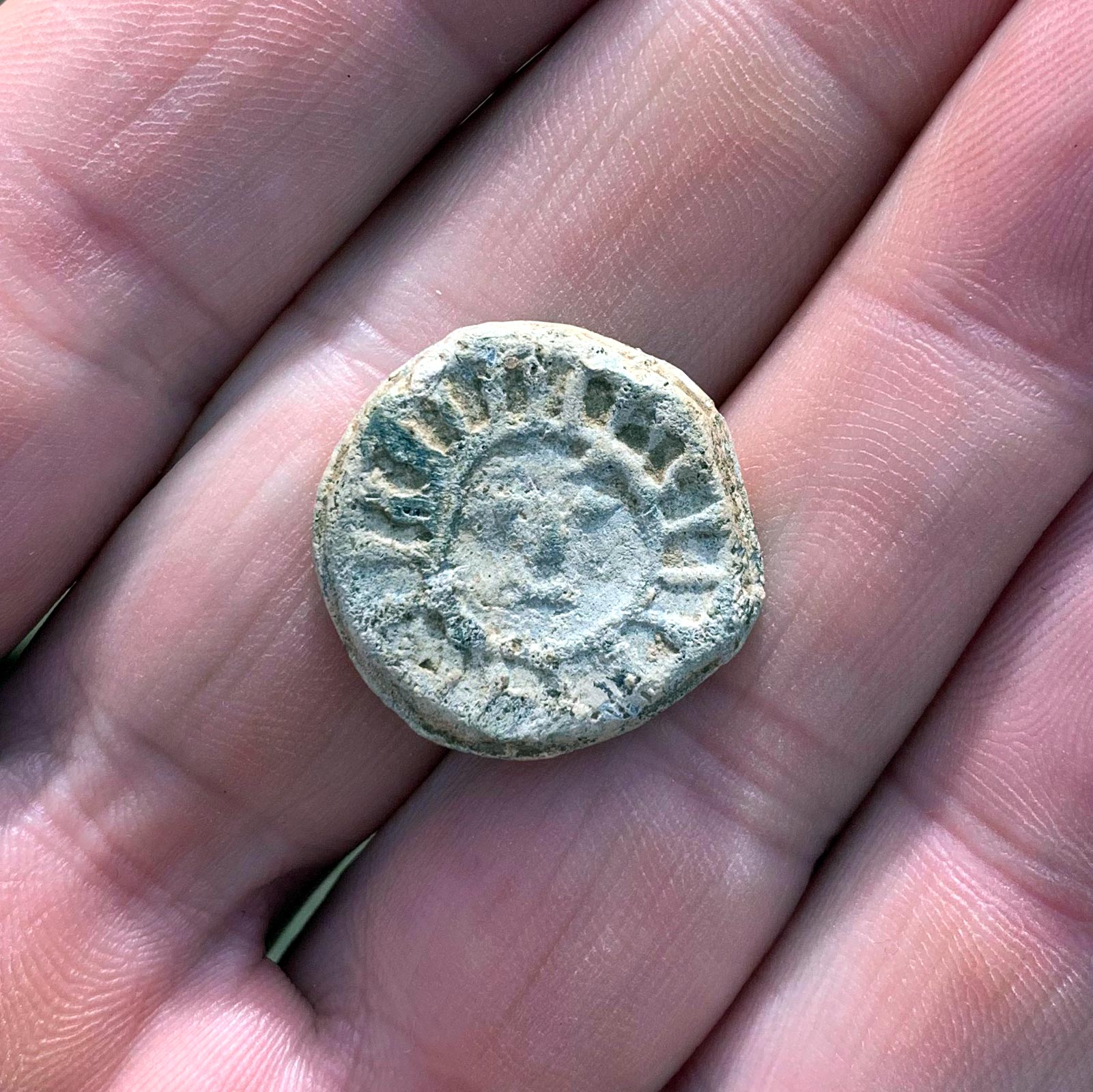
Lead farmers token, date unknown.
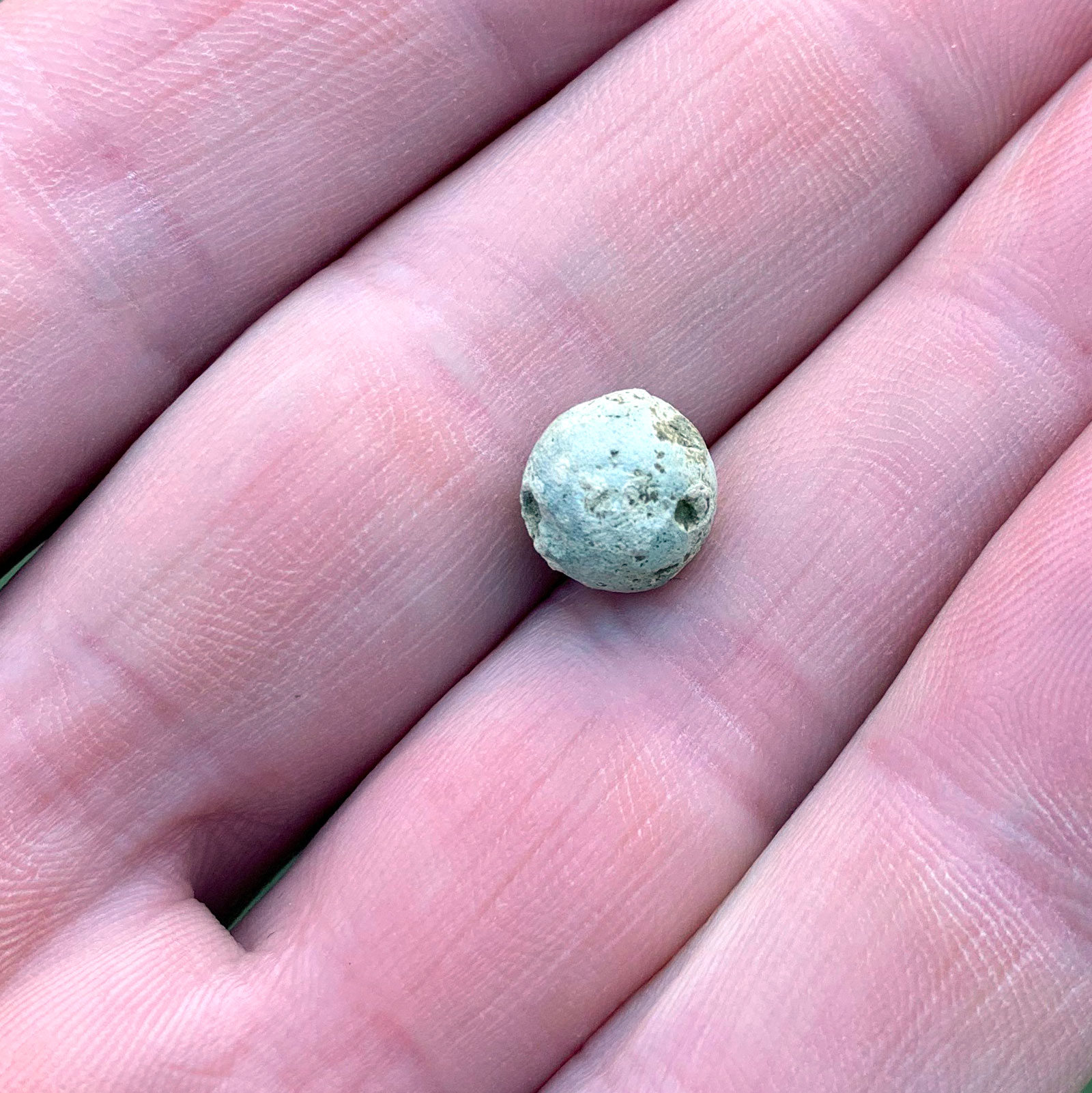
Lead musket ball, date unknown.
